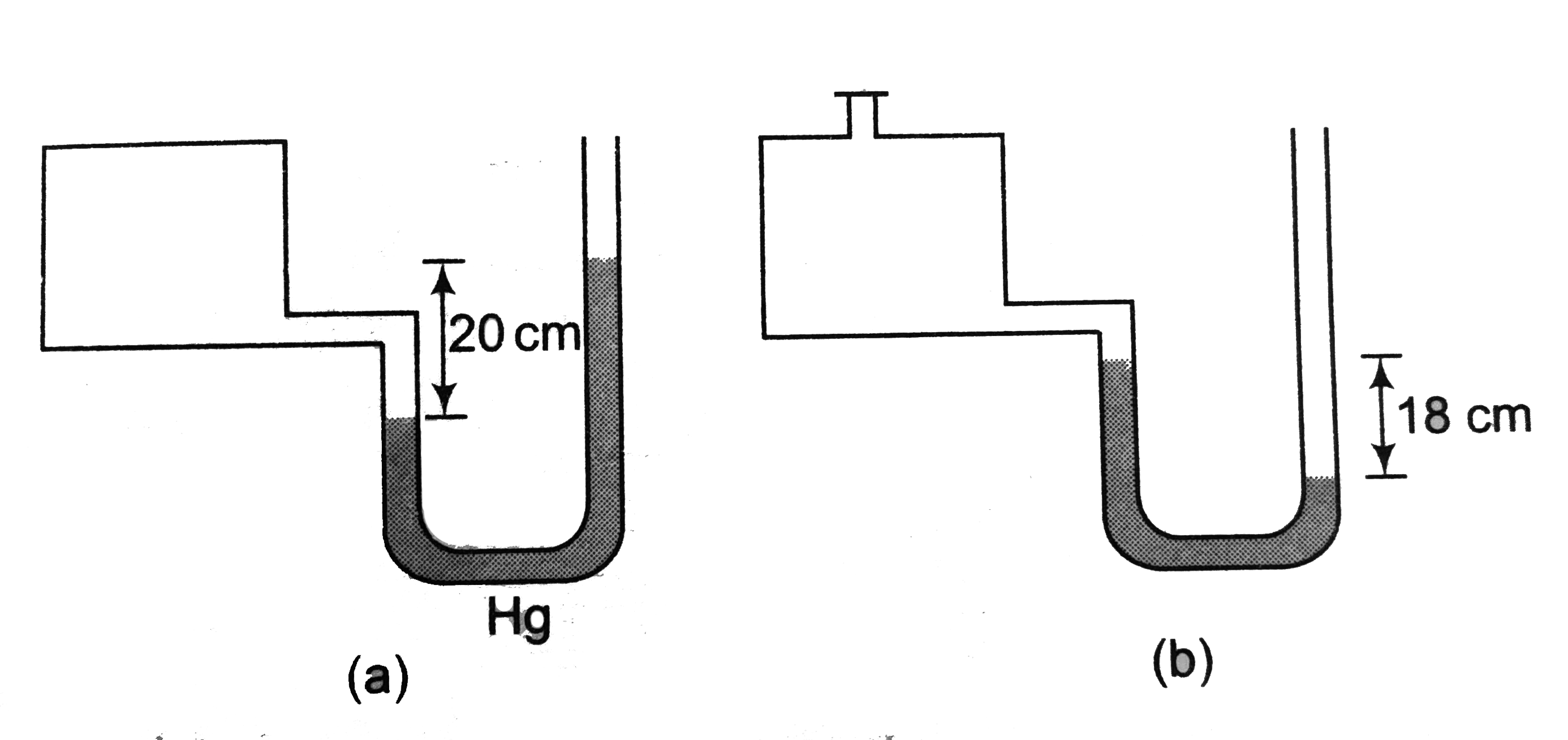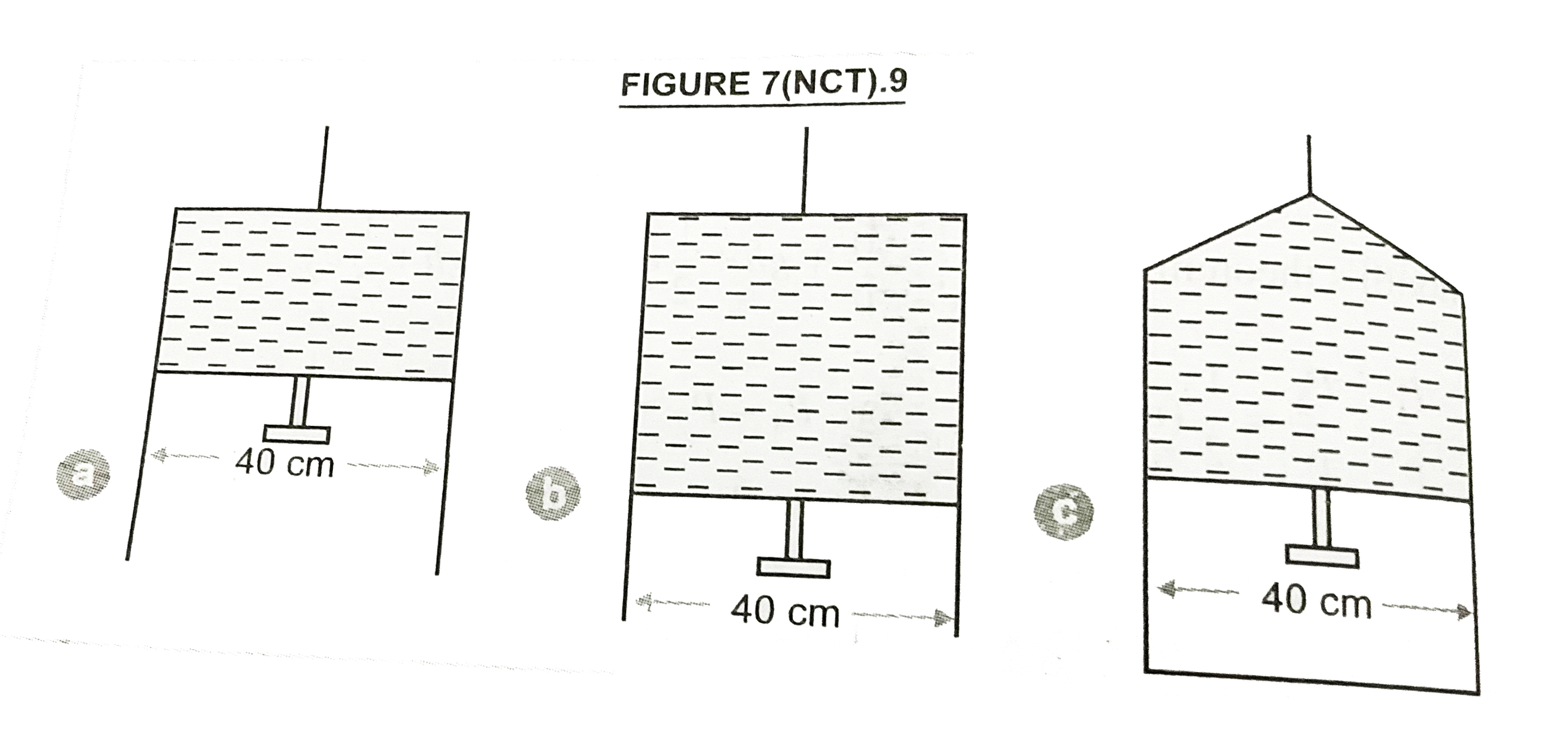NCERT File (Exemplar Problems (Objective Questions)) from MODERN PUBLISHERS PHYSICS (HINGLISH) MECHANICAL PROPERTIES OF FLUIDS for Class 11
| Class 11 | PHYSICS |
| Chapter | MECHANICAL PROPERTIES OF FLUIDS |
| MODERN PUBLISHERS PHYSICS (HINGLISH) | NCERT File (Exemplar Problems (Objective Questions)) |
| Medium | English |
| Academic Year | 2023-2024 |
Question 1
Explain why (a) the blood pressure is humans is greater at the feet than at the brain.
(b) Atmospheric pressure at a height of about 6 km decreases to nearly half its value at the sea level through the 'height' of the atmospheric is more than 100 km.
(c) Hydrostatic pressure is a scalar quantity even though pressure is force divided by area , and force is a vector. View SolutionQuestion 2
Explain why
(a). The angle of contact of mercury with galss is obtuse, while that of water with glass is acute.
(b). Water on a clean glass surface tends to spread out while mercury on the same surface tends to form drops. (Put differently, water wets glass while mercury does not).
(c). Surface tension of a liquid is independent of the area of the surface
(d). Water with detergent disolved in it should have small angles of contact.
(e). A drop of liquid under no external forces is always spherical in shape.View SolutionQuestion 3
Find in the blanks using the word (s) from the test appended with each statement.
(a) Surface tension of liquid generally …..with temperatures (increase//decreases).
(b) Viscosity of gases ….. With temperature, whereas viscosity of liquids ……with temperature. (increases//decreases)/
(c) For solids with elastic modulus of rigidity, the shearing force is proportional to .....while for fluids it is proportional to ....(shear strain//rate of shear strain).
(d) For a fluid in a steady flow, from .....(conservation of mass// Bernoulli's principle)
(e ) For the model of a plane in a wind tunnel, turbulence oc curs at a ...... speed for turbulence for an actual plane (greater//smaller)/View SolutionQuestion 4
Explain why
(a). To keep a piece of paper horizontal, you should blow over, not under, it
(b). When w try to close a water tap with our fingers, fast jets of water gush through the openings between our fingers
(c). The size of the needle of a syringe controls flow rate better than the thumb pressure exerted by a doctor while administering an injection
(d). A fluid flowing out of a small hole in a vessel results in a backward thrust on the vessel
(e). A spinning cricket ball in air does not follow a parabolic trajectory.View SolutionQuestion 13
Glycerine flows steadily through a horizontal tube of length 1.5m and radius 1.0 cm. if the amount of glycerine collected per second at one end is 4.0×10−3kgs−1, what is the pressuer difference between the two ends of the tube? (density of glycerine = 1.3×103kgm−3 and viscosity of glycerine =0.83Nsm−2).View SolutionQuestion 20
What is the excess pressure inside a bubble of soap solution of radius 5.00mm, given that the surface tension of soap solution at the temperature (20∘C) is 2.50×10−2Nm−1? If an air bubble of the same dimension were formed at a depth of 40.0 cm inside a container containing the soap solution (of relative density 1.20), what would be the pressure inside the bubble? (1atm. is 1.01×105Pa).View SolutionQuestion 21
A tank with a square base of area 1.0m2 is divided by a vertical parition in the middle. The bottom of the partition has a small hinged door of area 20cm2. The tank is filled with water and an acid (of relative density 1.7) in the other, both to a height of 4.0m. Compute to force necessary the force nec cessary to keep the door closed.View SolutionQuestion 22
A manometer reads the pressure of a gas in a enclosure as shown in figure(a) When some of the gas is removed by a pump, the manometer reads as in (b). The liquid used in the manometers is mercury and the atmospheric pressure is 76cm of mercury.

(i) Give the absolute and gauge pressure of the gas in the enclosure for cases (a) and (b) in units of cm of mercury .
(ii) How would the level change in case (b) if 13.6cm of water are poured into the right limb of the manometer?View SolutionQuestion 23
Two vessels have the same base area but differnent shapes. The first vessel takes twice the vloume of water that the second vessel requires to fill up to a paricular common height . Is the force exerted by water on the base of the vessel the same in the two case? If so, why do the vessels filled with water to that same height give different reading on a weighting scale ?View SolutionQuestion 25
In deriving Bernoulli's equation , we equated the workdone on the fluid in the tube to its change in the potential and kinetic energy (a) How does the pressure change as the fluid moves along the tube if dissipative forces are present ? (b) Do the dissipative forces becomes more important as the fluid velocity increase? Discuss qualitatively. View SolutionQuestion 28
In Millikan's oil drop experiment, what is the terminal speed of a speed of a drop of radius 2.0×105m and density 1.2×103m−3? Take the viscosity of air at the temperature of the experimental to be 1.8×10−5Nsm2. How much is the viscous force on the drop at that speed? Neglect buoyancy of the drop due to air. View SolutionQuestion 29
Mercury has an angle of contact equal to 140∘ with soda lime galss. A narrow tube of radius 1.00mm made of this glass is dipped in a through containing mercury. By what amount does the mercury dip down in the tube relative to the mercury surface outside? Surface tension of mercury at the temperature of the experiment is 0.465Nm−1. Density of mercury = 13.6×103kgm−3.View SolutionQuestion 30
Two narrow bores of diameters 3.0mm and 6.0 mm are joined together to form a U-shaped tube open at both ends. If th U-tube contains water, what is the difference in its levels in the two limbs of the tube? Surface tension of water at the temperature of the experiment is 7.3×10−2Nm−1. Take the angle of contact to be zero. and density of water to be 1.0×103kg/m3.
(g=9.8ms−2)View SolutionQuestion 31
(a). It is known that density ρ of air decreases with height y as
ρ=ρ0e−y/y(_o) ltb rgt where po=1.25kgm−3 is the density at sea level, and yo is a constant. This density variation is called the law of atmospheres. Obtain this law assuming that the temperature of atmosphere remains a constant (isothermal conditions). Also assume that the value of g remains constant
(b). A large He balloon of volume 1425m3 is used to lift a payload of 400 kg. Assume that the balloon maintains constant radius as it rises. How high does it rise?
[take yo=8000mandρHe=0.18kgm−3]View SolutionQuestion 36
The angle of contact at the interface of water glass is 0∘ ethylalcohol-glass is 0∘ mercury glass is 140∘ and methyliodide-glass is 30∘ A glass capillary is put in a through containing one of these four liquids. It is observed that the meniscus is convex. The liquid in the through isView SolutionQuestion 47
The sap in trees, which consists mainly of water in summer, rises in a system of capillaries of radius r=2.5×10−5m. The surface tension of sap is T=7.28×10−2Nm−1 and the angle of contact is 0∘. Does surface tension alone ac count for the supply of water to the top of all trees ?View Solution
All Exercises from MODERN PUBLISHERS PHYSICS (HINGLISH) Class 11 PHYSICS MECHANICAL PROPERTIES OF FLUIDS
- PRACTICE PROBLEMS
- CONCEPTUAL QUESTIONS
- PROBLEMS
- NCERT (ADDITIONAL EXERCISES)
- NCERT (EXEMPLAR PROBLEMS (SUBJECTIVE QUESTIONS))
- NCERT (SHORT ANSWER TYPE QUESTIONS)
- NCERT (TEXTBOOK EXERCISES)
- NCERT FILE (EXEMPLAR PROBLEMS (OBJECTIVE QUESTIONS))
- NCERT FILE (MCQ)
- HOTS (HIGHER ORDER THINKING SKILLS) (ADVANCED LEVEL))
- REVISION EXERCISE (ADDITIONAL QUESTIONS)
- REVISION EXERCISE (FILL IN THE BLANKS)
- REVISION EXERCISE (LONG ANSWER QUESTIONS)
- REVISION EXERCISE (NUMERICAL PROBLEMS)
- REVISION EXERCISE (SHORT ANSWER QUESTIONS)
- REVISION EXERCISE (VERY SHORT ANSWER QUESTIONS)
- COMPETITION FILE (A. MCQ (OBJECTIE TYPE QUESTIONS))
- COMPETITION FILE (ASSERTION REASON TYPE QUESTIONS)
- COMPETITION FILE (B. MCQ (AIPMT/NEET & OTHER STATE BOARDS FOR MEDICAL ENTRANCE))
- COMPETITION FILE (C. MCQ WITH MORE THAN ONE CORRECT ANSWERS)
- COMPETITION FILE (D. MCQ BASED ON A GIVEN PASSAGE/COMPREHENSION)
- COMPETITION FILE (INTEGERS TYPE QUESTIONS)
- COMPETITION FILE (JEE (ADVANCED) FOR IIT ENTRANCE)
- COMPETITION FILE (JEE (MAIN) & OTHER STATE BOARDS FOR ENGINEERING ENTRANCE)
- COMPETITION FILE (MATCHING TYPE QUESTIONS )
- CHAPTER PRACTISE TEST
- SOLVED EXAMPLES

 .
.